If you are anything like me, you might think of Manly as merely a busy beachside town; frequented by English backpackers and oversized run clubs. This isn’t necessarily an incorrect view of the town, however, there are a few forgotten secrets in Manly that I’ve been lucky enough to stumble upon in my internet rabbit hole escapades that might deepen your understanding.
You might wonder why the town feels old despite all the buildings being new. You might even wonder how any of the local businesses keep themselves afloat given the foot traffic tends to stay on the Corso; the arterial boulevard lined with sports bars and linen clothing stores. If you were a curious soul, you may question how the Manly Castle (currently occupied by ICMS University) is the only gothic building North of the bridge, and whether there were any other buildings, just like that one, in an earlier time.
The answer to all these excellent questions is that the town of Manly was very deliberately designed by the colonial government of New South Wales – starting in 1876 when the town was officially established – to resemble the English seaside town of Brighton. Local businessman Henry Gilbert Smith marketed it as a seaside resort paradise. Manly fiends may now be realising that the New Brighton Hotel (pictured below) is a result of this marketing effort.
The streets in Manly were designed by professional town-planners to facilitate local marketplaces, with strong resemblance to the developing post-feudal towns of South England. This has allowed the Manly weekend markets to thrive and the local businesses to keep themselves busy despite their distance from the Corso.
So, is it any surprise that Manly is full of Englishmen? Not really. It was made to be an English holiday town. But please, stick with me as I explore this a bit further… Surely a famous holiday town in the new hot spot of the British Empire must have attracted some pretty important people in the late Victorian era? Well, I spent a few nights searching through the Northern Beaches Council gallery archive (I also wonder how I have ever gotten laid) and I found some pretty interesting old oil paintings that piqued my interest. I followed this trail and found a castle that still exists in Manly!
Currently, the ICMS campus (seen above) stands out as the only building in Manly designed in the neo-gothic style. An unexpected discovery regarding this particular building: it was used as Gatsby’s home in Baz Lurman’s 2013 adaptation of The Great Gatsby (seen below).
Sorry for getting off track, back to oil paintings now. What is this massive neo-gothic castle (seen below) that I found hidden deep in the archives? Interestingly, the castle was commissioned by a very important figure in Australian colonial history.

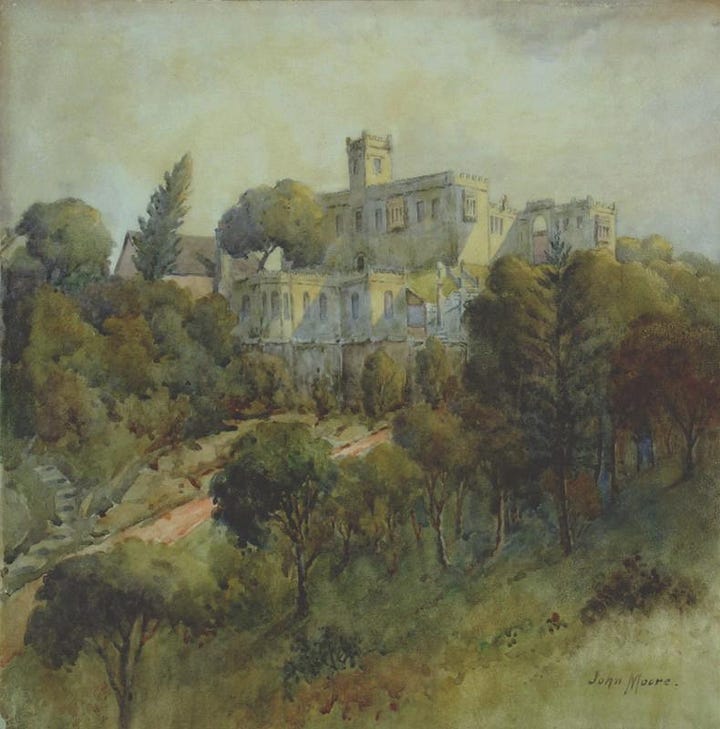
William Bede Dalley was born in Sydney to two English convicts. Despite his lack of connection to the Crown, he boasted a successful political career, becoming the Attorney-General and later, the Colonial Secretary of New South Wales. A deeply detestable man, his decisions regarding the Indigenous populations of New South Wales are still evident today. His terrible actions satisfied the Crown and allowed him to fund the construction of this castle. He lived in this castle, undisturbed by the local population, all the while wreaking havoc on Indigenous populations in NSW. As of 2021, only 3.4% of the Northern Beaches identified as Aboriginal and/or Torres Straight Islander. This statistic is a direct result of the systematic removal and genocide that happened in this area. I now wish to return your mind to the fact that the Northern Beaches (and Manly especially) were tailored to be palatable to the English tourist. You can connect the dots.
I feel it necessary to reiterate that this man was not English. He was however, obsessed with the hegemony of the Crown and English culture as a whole. An anglophile: one might equate him to the Victorian Era equivalent of a weaboo. It was this strange cultural obsession that prompted him to build a neo-gothic castle as his house, in a plot of land once called ‘Manly Heights’. Nowadays, you’ll find Manly Oval and its grandstand here.
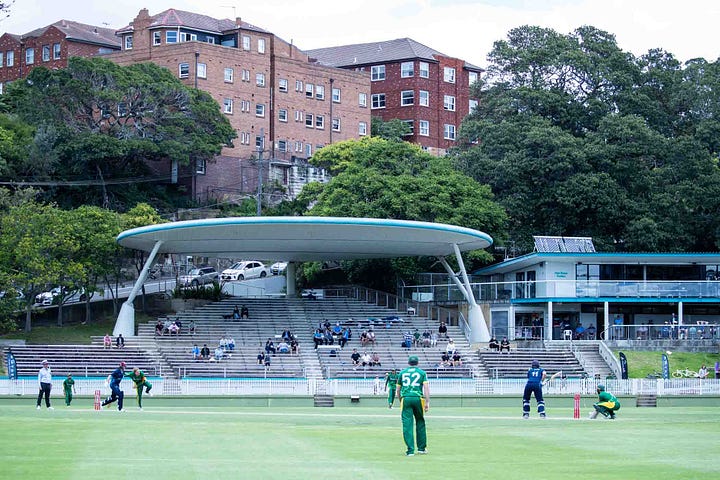
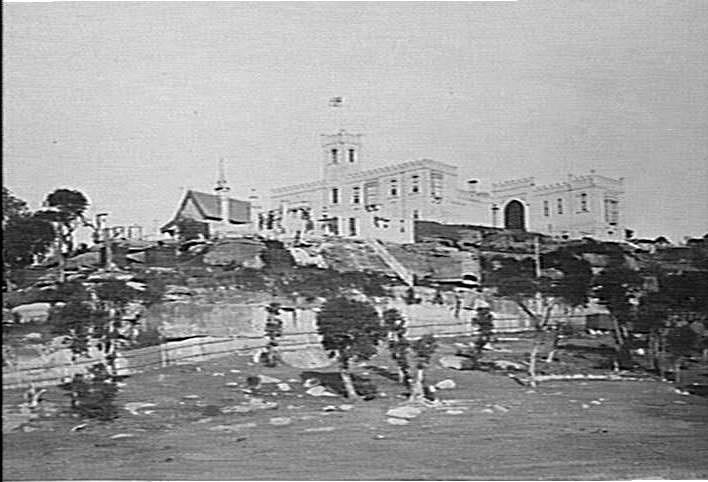
The castle in question was known colloquially as ‘Dalley’s Castle’ and sported an impressive conservatory, 8 bedrooms, 2 bathrooms, 2 storerooms, pantry, kitchen and scullery (a room specifically for washing dishes). It was Dalley’s main residence until his death in 1889. The property was bought by a wealthy family that came about their wealth raising cattle.
At this point it was rented out to a local secondary school: Manly Boys Highschool. This school would later become the gem of North Curl Curl that we now call Manly Selective Campus. This venture would soon become unfruitful, and the castle sat dormant for many years, slowly becoming derelict.
The owners tried to sell on several occasions but were unsuccessful. It was rented out to Camden Grammar School in 1933-1939, again as a boarding house, but was then demolished because it became too derelict for residential renting. The castle was replaced by social housing immediately after its demolishment.
However, against all odds, one of the castle walls (and its gargoyles) is still standing today and is visible from Sydney Road. All that’s left of a once grand castle. A little piece of our history, only visible to those who know of what once was. One might consider this a metaphor for the difficulties of escaping colonial power and legacy. Perhaps, the gargoyle that still watches over Manly can serve as a reminder to all of us that — at least for now — colonial legacy remains, whether we like it or not.









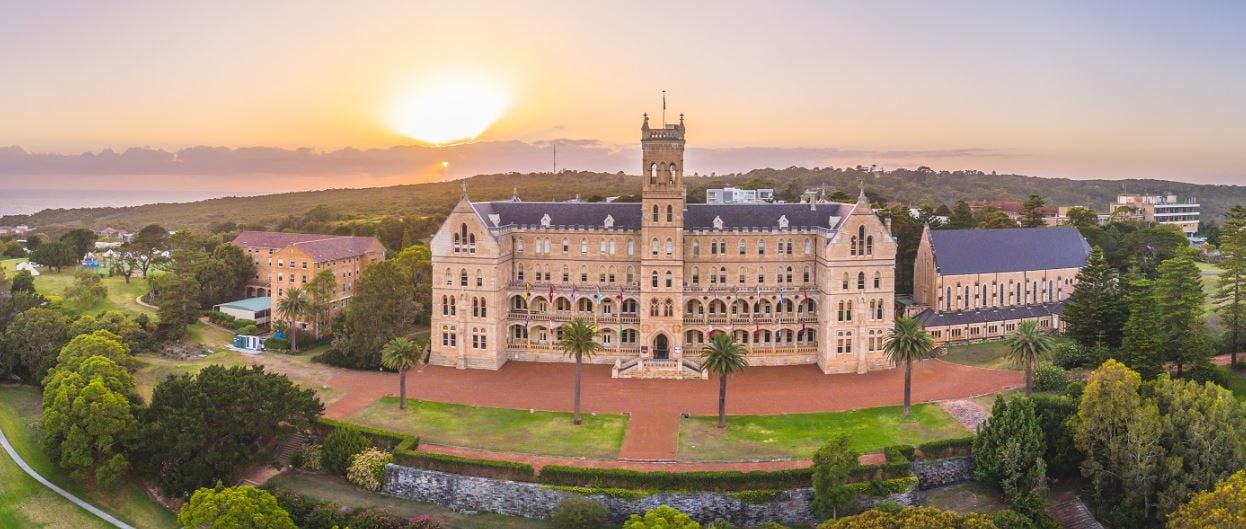
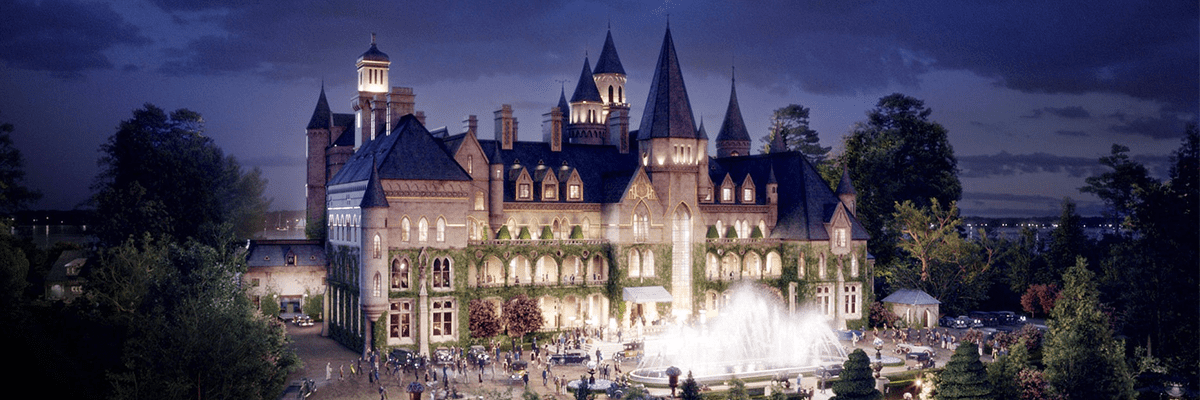
Poetic that a castle built by a “weeaboo-equivalent” was temporarily rented out to a school that would one day be full of actual weebs